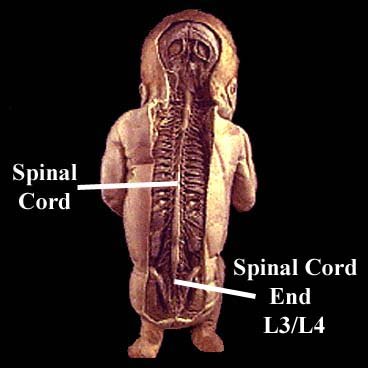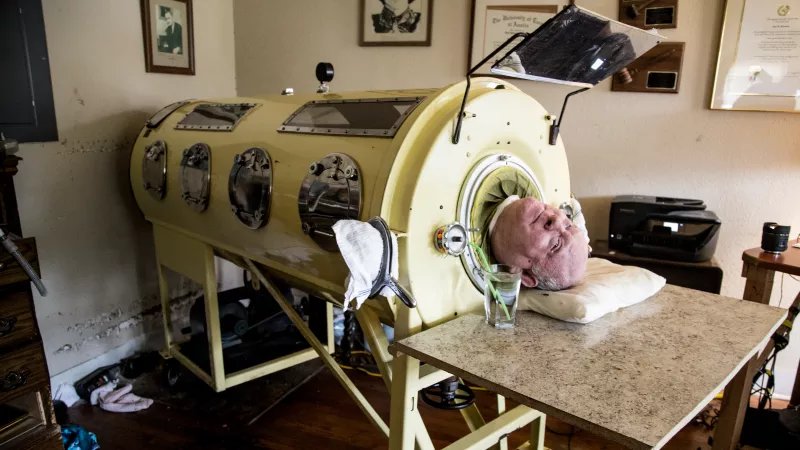
1. The polio story as you learned it is wrong. It’s one of the most often misunderstood sequence of events in the last two hundred years. I wanted to explain a few things about the disease to help people understand what actually happened. 

2. The first modern account of something resembling polio was in 1789. A physician named Michael Underwood described an illness in children he called “Debility of the Lower Extremities.” He attributed it to teething and foul bowels.
archive.org/details/b28771…
archive.org/details/b28771…
3. One of the next mentions was from Louisiana in 1841. A few children came down with paralysis. The supposed cause: teething. Why would teething be associated with paralysis?
tinyurl.com/yc2k7vay
tinyurl.com/yc2k7vay
4. Various stories appeared throughout the 1800s of children coming down with paralysis, almost always in their legs. Many people called it “teething paralysis,” but others settled on “infantile paralysis.”
5. This was a new phenomenon: Doctors had never seen it before and didn’t know why it was happening. Research began to reveal that the cause of paralysis were lesions on the grey part of the spinal cord.
6. If you developed a lesion on your spinal cord, they called this a “poliomyelitis.” Polio = grey. Myelitis = inflammation of the spinal cord.
7. A poliomyelitis was a lesion on your spinal cord. You could have more than one of them. But they didn’t know why children had begun developing them, seemingly out of nowhere.
8. Scientists conducted research on animals by purposefully poisoning them with arsenic, an ingredient of popular medical remedies of the time. The result? Paralysis in their hind legs.
collections.nlm.nih.gov/ext/dw/1015021…
collections.nlm.nih.gov/ext/dw/1015021…
9. When they did autopsies of the animals, they discovered lesions in their spinal cord. The animals had what they called “poliomyelitis.”
10. During the 1800s, the most common medical treatments for any sickness contained mercury—in order to clear the bowels. Infants received mercury-containing teething powder. 

11. This wasn’t a fringe treatment, but something as common as Tylenol might be considered today. If the metal arsenic was known to cause poliomyelitis, then perhaps, so could mercury.
12. Throughout the 1800s, there were a few cases of infantile paralysis that would pop up here and there. Not really any epidemics. In the 1890s, something changed.
13. A new pesticide was invented in 1892 called lead arsenate near Boston, Mass to combat the spread of a foreign invader—the gypsy moth. It combined lead and arsenic together because it couldn’t be easily washed off.
deq.state.va.us/Portals/0/DEQ/…
deq.state.va.us/Portals/0/DEQ/…
14. If you’re interested, I talk about this whole story in my book, “The Moth in the Iron Lung.” You can get it here: amazon.com/Moth-Iron-Lung…
15. The pesticide began being sprayed aggressively and within two years, the first real epidemics of poliomyelitis (infantile paralysis) began to appear in the northeastern U.S. Rather than a few children coming down with something, it started getting into the hundreds.
16. These epidemics affected children more than anyone, but had another strange set of victims: animals. Horses, dogs, chickens, pigs. All dead from poliomyelitis—lesions in their spinal cords that caused paralysis & death.
archive.org/details/infant…
archive.org/details/infant…
17. I say strange because the poliovirus doesn’t affect animals (besides Old World Monkeys). These early outbreaks are referred to as the first polio outbreaks in the U.S., but we know it couldn’t have been due to the poliovirus if animals were being struck.
18. Another event would confuse scientists of the day—an effect which is the main reason people get the polio story so wrong even today: Koch’s Postulates.
medicinenet.com/script/main/ar…
medicinenet.com/script/main/ar…
19. Koch’s Postulates were some research guidelines that basically stipulated there was a single causative microbe for every disease. It WAS true for all of the other diseases: cholera, typhoid fever, diphtheria.
20. Over the next few years, scientists discovered that many things could cause a poliomyelitis—it wasn’t just arsenic. There were several other viruses and bacteria that if injected directly into the nervous system could cause lesions that would trigger paralysis.
21. But the cloud of Koch’s Postulates hung over their research, and many scientists felt that—like all the other diseases—poliomyelitis HAD to be due to ONE thing: a bacteria or a virus. They just had to find it.
22. You can see the shift in their thinking around this time. They start referring to the disease as a proper noun: Poliomyelitis, rather than using it as a symptom: The patient has a poliomyelitis.
23. At this time, viruses were still very difficult to work with. They couldn’t see them, only deduce their presence by the symptoms they might cause. In 1908, a virus was found to be able to cause paralysis in monkeys.
historyofvaccines.org/content/poliov…
historyofvaccines.org/content/poliov…
24. They named it “poliovirus,” because it could cause poliomyelitis in the monkeys. Other viruses and bacteria could cause the same thing: coxsackievirus, echovirus, D68, etc.
25. With Koch’s Postulates guiding their search, they began to focus on this one virus as THE cause of poliomyelitis, despite knowing there were many other causes. This mistake would create suffering for millions of people over the next few decades.
26. The question is if viruses and bacteria COULD cause poliomyelitis, why then, and not before? Why did epidemics of polio suddenly appear in the 1900s when they did not exist before?
27. Some have suggested improvements in sanitation as the cause. They suggest that better sanitation prevented people from picking up the infections as children, when they were protected by their mother’s breastmilk antibodies.
28. This hypothesis is weak. The disease was called infantile paralysis by many even in the 1940s because it seemed to always strike infants. If better sanitation was the cause, teens or adults should have been the ones with problems.
29. Also, the early outbreaks were always in rural areas, where there was little change in sanitation practices. Not coincidentally, these rural areas were subjected to heavy pesticide spraying.
30. The real question is if the spinal cord was well-protected from these paralytic infections, why did it suddenly seem to become vulnerable starting around this time.
31. I believe ingested pesticides, known to cause cellular membrane dysfunction, created a path directly from the intestines to the bottom of the spinal cord, located directly behind, for the viruses and bacteria to take hold.
32. This is why multiple viruses (poliovirus, coxsackievirus, echovirus, etc.) all began paralyzing children around this time. It wasn’t a genetic mutation. It wasn’t sanitation improvements. It was a physical alteration of the gut integrity by pesticides.
33. Modern scientists will say the virus gets in the blood and reaches the spinal cord that way. But why did the infection nearly always affect the bottom of the spinal cord, when the blood supply reaches the entire cord evenly?
34. This is why I believe infants & children were the worst affected. The bottom of the infant spinal cord (the part that controls the legs) lies directly behind the intestines. 

35. As you grow, the spinal cord does not grow as much as the vertebrae and in adults, the bottom of the spinal cord ends up being much higher in relation to the intestines—well out of reach for most toxic or microbial assaults. 

36. This is why the injected Salk polio vaccine worked so poorly. It created antibodies for only one of many viruses that could paralyze, and it created antibodies in the blood—a useless defense against an intestinal infection.
37. As lead arsenate fell out of favor because of its toxicity, a new set of synthetic pesticides came into play and made this problem much worse.
38. After World War 2, DDT began being applied everywhere, sprayed directly onto children’s food, their clothing, their bedding, etc. It made people very sick and the paralysis of poliomyelitis exploded. It was horrible. 





39. By 1952, it was clear many of the insects were becoming DDT-resistant, and its toxicity began to concern people. They began to use safer pesticides and, with lead arsenate also fading out of the picture, infantile paralysis began to disappear. 

40. Even Steedman’s Teething Powder, the mercury containing product administered to teething infants for so long, changed its formula.
trove.nla.gov.au/newspaper/arti…
trove.nla.gov.au/newspaper/arti…
41. By 1960, the ineffectiveness of the Salk vaccine concerned scientists and they gathered in Chicago to discuss the problem. People were getting paralyzed after even 4 or more shots.
manmadedisease.s3.amazonaws.com/ThePresentStat…
manmadedisease.s3.amazonaws.com/ThePresentStat…
42. They were also concerned about study in Detroit where they had taken stool samples of nearly 1,000 people diagnosed with polio. Just one third of those people tested actually had polio. Everyone else had been stricken with some other paralyzing virus.
jamanetwork.com/journals/jama/…
jamanetwork.com/journals/jama/…
43. This presents a problem because many people were told they had “polio” when they were affected as children. The reality is—doctors could not have known what caused the paralysis. It could have been one of many different viruses, pesticides, or even bacteria. 

44. The Sabin oral polio vaccine soon came into use & it could actually control the poliovirus infection within the gut—where it actually made a difference. But it didn’t matter. It only affected the poliovirus—none of the other paralyzing microbes.
45. By this time (1963), poliomyelitis (aka “polio”) had all but disappeared. As it turns out, neither of the vaccines were actually necessary. The Salk vaccine was horrible at actually preventing paralysis, and the Sabin vaccine came too late to make a difference.
46. Today, countries that use toxic pesticides still struggle with infantile paralysis, aka polio. Extremely aggressive oral polio vaccine use may help control poliovirus infections...
pediatrics.aappublications.org/content/135/Su…
pediatrics.aappublications.org/content/135/Su…
47. ...but with several other paralyzing viruses in existence, it is not the panacea people believe it to be. To complicate matters, the oral poliovirus vaccine itself occasionally creates paralysis.
npr.org/sections/goats…
npr.org/sections/goats…
48. So what is one to takeaway from all of this? “Polio” is a man-made problem. The paralysis caused from direct pesticide exposure OR from viruses being allowed into the spinal cord can be directly attributed to a man-made cause.
49. It appeared in epidemic form in the 1890s from the introduction of lead arsenate and disappeared in the 1950s when DDT usage fell. Because we know it was caused by many different things, the effect of a single-virus vaccine on its decline is minimal.
50. As I mentioned earlier, I have a book that covers this entire story in detail and mentions many things I’ve skipped. It’s called “The Moth in the Iron Lung.” I hope you’re able to read it.
amazon.com/Moth-Iron-Lung…
amazon.com/Moth-Iron-Lung…
51. If we can get the polio story correct in our heads, many other problems can be solved. The infantile paralysis that still takes place in many developing countries will not be solved from the polio vaccine! Cleaning up their environment is absolutely necessary.
52. Many thanks for reading, and I’m happy to try and answer any of your questions.
53. One more thing, this picture is what everyone thinks of when they think of polio. This was a publicity stunt arranged for Life Magazine. Most of these iron lungs were brand new and were headed around the country to other hospitals. 

54. It was taken in the auditorium of Ranchos Los Amigos Hospital in Los Angeles, which had been emptied of its rows of seating to make this picture. It was designed to show worried parents that the U.S. was ready for battle.
55. Although the hospital had the largest polio ward in the country, at its peak it would have never had this many iron lungs in operation. Most hospitals in big cities had a couple of iron lungs.
56. There were around 1,1000 in the whole country at their peak. Nothing like this picture would indicate.
57. The next time you look at this photo, you should be struck at the destructive power of man and his inventions. The poliovirus, like all the other paralytic causes of that era, were incapable of harming us without some of our help.
58. End.
Tweet #56 should have read 1,100 iron lungs, not 11,000. Ranchos Los Amigos, in Los Angeles, the largest polio ward in the country, is thought to have normally kept 10 or 11 iron lungs on hand. Boston had around 8.
If you haven't seen it already, I did a 6-part video series on the true story of polio that explains some of this. You can find it on YouTube.
Polio is a man-made disease–Part 1:
Polio is a man-made disease–Part 1:
• • •
Missing some Tweet in this thread? You can try to
force a refresh







